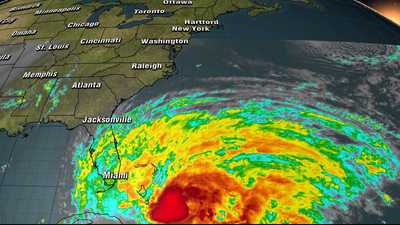
26 Oct Tips to Help Westchester Residents Protect Their Homes as Hurricane Sandy Approaches
 Hurricane Sandy is still days away, and it’s still far too soon to predict exactly how the 18th named storm of the Atlantic hurricane season will affect residents and businesses in the Westchester, NY area, but experts are advising those in the potential path of the storm to begin taking steps to minimize their exposure and risk to this massive storm.
Hurricane Sandy is still days away, and it’s still far too soon to predict exactly how the 18th named storm of the Atlantic hurricane season will affect residents and businesses in the Westchester, NY area, but experts are advising those in the potential path of the storm to begin taking steps to minimize their exposure and risk to this massive storm.
“Hurricane Sandy is still several days away, and we don’t know for sure how things will develop, but now is the perfect time to take actions that will protect our property, minimize damage, and help keep our families safe,” said Jeff Grasso, president of Grasso Development Corp. in New Rochelle, NY.
Grasso stressed that protecting the safety of human lives should always be the first consideration. Valuable information can be found on the Westchester County website’s severe weather page, http://keepingsafe.westchestergov.com/severe-weather, as well as by monitoring news programs on radio or television.
Grasso also advises Westchester residents and business owners to develop checklists that can be used to protect their homes and personal property. Some important suggestions include:
- Trim trees and shrubs in close proximity to your home, and remove dead or damaged tree limbs that could cause damage in a storm.
- Ensure that rain gutters, drains and downspouts are clear.
- Clear furniture from decks and patios. A garage can be utilized to store lawn furniture, outdoor toys, hanging plants and prevent them from causing damage to your home.
- Make sure you have fuel for a generator.
- Locate flashlights and make sure you have an adequate supply of batteries.
- Make sure windows are completely closed and locked.
- Learn where gas and water mains are located and how to turn off utilities.
- Elevate items such as furniture, rugs and electronics in your basement or move them to a higher floor.
- Elevate major appliances onto concrete blocks if they’re in a place that could flood.
- Check sump pumps and ensure that drains are clear.
If you do suffer flooding as a result of the storm, be cautious as you begin the cleanup. FEMA offers some valuable tips here: http://www.floodsmart.gov/floodsmart/pdfs/PDT_After_the_Flood_Tips.pd